Growing the group through teacher support
It’s wonderful to see so many great articles online about the benefits of Games Based Learning – this week, it has been this article on Wired by Clive Thompson that has been tweeted and retweeted frequently. It’s a good article and gets to the point quickly and clearly. One of these days, the administrators here at GamingEdus will try to save some of the best articles and archive links here on this website. That’s on the to-do list.
Another item on our to-do list is to continue to help educators with their use of Minecraft. Denise Colby and her team in Toronto (as well as Mark Hadala and his team in Hamilton and Dustin Carson and his group in the Brantford area) received Teacher Learning and Leadership program grants from the Ministry of Education and the Ontario Teachers Federation to explore Minecraft in education. Denise, Liam, and I, as part of the Toronto TLLP team, have had several meetings to plan our TLLP project and, with some great insight from Moses Velasco, one of the TDSB’s Instructional Leaders of the Professional Learning, Teaching, and Leadership Development Unit, we have developed a great plan to dig deeper, to deepen the understanding and use of Games Based Learning among educators. It’s relatively easy to introduce teachers to Minecraft. The challenging part is to sustain their interest and support individuals, to open everyone’s minds to broader potential for using this awesome video game (not just as a reward to do unsupervised after fast kids finish their work, and not simply as a super-structured teacher-directed task with no student input).
GamingEdus has been working on this goal for four years now, and the TLLP grant is a wonderful acknowledgement from the Ministry of Education that this effort is worthwhile. A while ago, we received some feedback from some University of Toronto virtual visitors about making our Professional Play server accessible to educators who may not have prior experience with video games. We wanted to stay true to our philosophy of inquiry-based learning and player autonomy, and eventually, we found a wonderful solution that respected our pedagogical goals while simultaneously providing adequate guidance for our newer or more cautious players. The fantastic thing is that our solution – the Minecraft Training Zone on the Professional Play server – was built by our GamingEdus community of players of all ages. The students are teaching the teachers! Here are some screen shots to demonstrate how we are offering teacher support in the world of Minecraft itself.
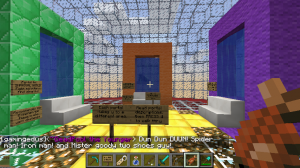 This is inside the glass dome we have for new users.
This is inside the glass dome we have for new users.
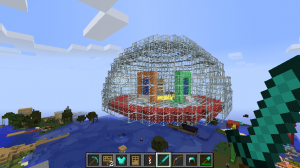 This is what the outside of the glass dome looks like.
This is what the outside of the glass dome looks like.
These three doors offer you choice for your Minecraft early learning experience. Minecraft Training Zone, Survival, or Creative – it’s up to the user.
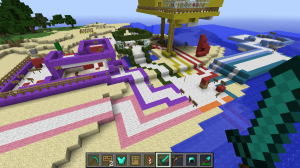 The training zone has coloured paths, so YOU differentiate the learning based on the path you take.
The training zone has coloured paths, so YOU differentiate the learning based on the path you take.

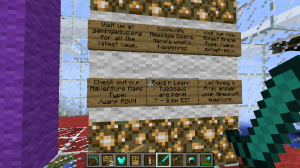 In addition, we’ve added more signage around the welcome area.
In addition, we’ve added more signage around the welcome area.
It’s all well and good to offer in-game support, but there’s nothing quite like face-to-face conversations. Denise Colby and I had the great opportunity to meet with two dynamic, fellow TDSB teachers, Sharon Moskovitz and Teresa Allan last Tuesday. Sharon and Teresa are applying for a OTF Teacher Learning Co-Op grant and they want to explore Minecraft. Nothing can replace genuine interest and enthusiasm in a project, and these two teachers have it. Sharon and Teresa aren’t jumping on a bandwagon – they are curious about how they can use Minecraft in their ER16 schools and are willing to try it out themselves, read more about it, and plan ways to incorporate it into their classrooms. The four of us spent over 90 minutes chatting about the possibilities and how we could help each other, and I am excited about being involved in their project. Our Twitter exchange shows it!
Great collaboration session with @allanteresa @Niecsa and @MzMollyTL about minecraft. Thanks girls for sharing ur knowledge! Such passion!
— Sharon Moskovitz (@s_m077) October 8, 2014
“@MzMollyTL: Nearly forgot 2thank @allanteresa 4cookies & tea & @s_m077 4engaging talk -hope @otf_pd okays their project!” I second this!
— Denise Colby (@Niecsa) October 10, 2014
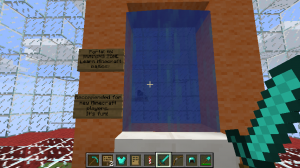
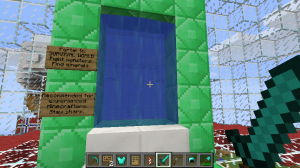

Leave a Reply